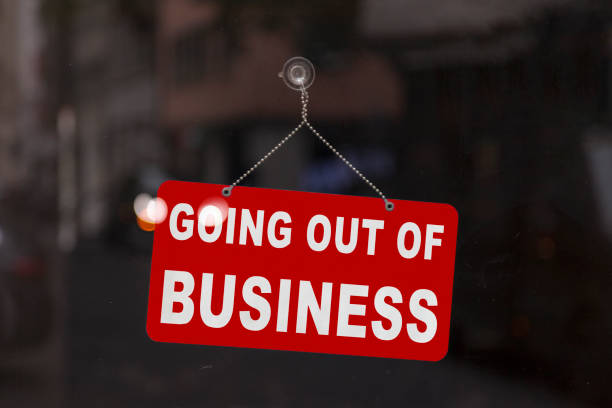Rumors are swirling about the potential closure of Big Lots in 2024, and if the company indeed shutters its doors, it will mark the end of an era for discount retail in the United States. The main topic of this article examines the numerous factors contributing to this possible outcome and its far-reaching implications. Big Lots has been a significant player in the affordable retail space, providing consumers with a range of discounted merchandise, often referred to as dmcc or “discounted merchandise and consumer commodities.” The news of its potential closure brings about a number of questions regarding the retail industry. This article will delve into the history, financial struggles, market dynamics, consumer behavior, and possible future scenarios for Big Lots. We’ll also explore the broader impact on employees, customers, and the retail sector as a whole.
Background of Big Lots

The History of Big Lots
Big Lots was founded in 1967 by Sol Shenk. It started as a closeout retailer, specializing in buying and selling surplus and discontinued goods at deeply discounted prices. Over the years, the company grew rapidly, expanding its footprint across the United States. By the early 2000s, Big Lots had become a household name, known for offering a vast array of products from housewares to furniture, much of it classified as “dmcc.” Despite its growth, the company began encountering various challenges in recent years that now threaten its very existence.
The Role of Big Lots in Retail
Big Lots has solidified its role in the retail sector by catering to budget-conscious consumers. Its stores provide a wide range of products, including groceries, electronics, home goods, and seasonal items. The company’s ability to offer high-quality goods at reduced prices has made it a go-to for many shoppers. However, the retail environment has become increasingly competitive, which has impacted Big Lots’ ability to maintain its market positioning. The shift toward online shopping and changes in consumer behavior have also played a significant role in the company’s current predicament.
Factors Leading to Business Decline
Financial Struggles
Big Lots has faced significant financial difficulties in recent years. Declining sales, coupled with high operational costs, have resulted in substantial losses. The company’s debt levels have also risen, making it more challenging to invest in new technology or expand its market reach. Financial analysts have pointed to poor fiscal management and strategic missteps as critical drivers of the company’s financial woes.
Market Competition
The retail industry is highly competitive, and Big Lots has found it increasingly difficult to differentiate itself from rivals like Walmart, Target, and Dollar General. These competitors not only have larger market shares but also more diversified product lines and robust e-commerce platforms. Below is a comparative table showcasing some critical differences between Big Lots and its main competitors:
| Retailer | Market Share (%) | E-commerce Integration | Average Store Size (sq ft) |
|---|---|---|---|
| Big Lots | 5% | Limited | 25,000 |
| Walmart | 20% | Extensive | 180,000 |
| Target | 15% | Advanced | 135,000 |
| Dollar General | 10% | Moderate | 9,000 |
Consumer Trends
The lessening inclination toward brick-and-mortar shopping has adversely affected Big Lots. Consumers are increasingly opting for the convenience and variety offered by e-commerce platforms. Furthermore, there is a growing preference for organic and high-quality goods, which are typically not the focal point of discount retailers like Big Lots. The company’s inability to adapt quickly to these evolving consumer trends has further exacerbated its problems.
Operational Challenges
Big Lots has also grappled with numerous operational challenges. Issues within its supply chain have resulted in inventory shortages, affecting the availability of popular products. The company has also faced internal management issues, making it difficult to implement effective strategies for recovery. The cumulative effect of these operational hurdles has been a significant drag on Big Lots’ performance.
Impacts of the Closure
On Employees
If Big Lots goes out of business, it will have serious repercussions for its workforce. Thousands of employees stand to lose their jobs, which will undoubtedly have a ripple effect on local economies. The company may offer severance packages and transition support, but these measures often fall short of providing long-term security.
On Consumers
Big Lots’ closure will also impact its loyal customer base. Many consumers rely on the store for affordable products. The loss of Big Lots means that these shoppers will have to seek alternatives, which may not offer the same level of affordability or convenience. This could lead to increased economic strain for budget-conscious families.
Here are two key points to consider:
- Loyal customers may shift to online retail giants like Amazon.
- Smaller local businesses may experience an influx of new customers looking for budget-friendly options.
On the Retail Industry
The potential closure of Big Lots could also have broader implications for the retail industry. Competitors may benefit from an uptick in business, but the loss of a major player could also disrupt market dynamics, potentially leading to increased prices. The open market space may encourage new entrants, further intensifying the competitive landscape.
Future Prospects
Possibilities of Acquisition
There is always the possibility that Big Lots could be acquired by another company. Several potential buyers could see value in Big Lots’ brand and assets. An acquisition could provide the necessary capital for restructuring, allowing the brand to survive albeit under different management. However, such moves often come with their own set of challenges and uncertainties.
Alternatives and Solutions
If Big Lots wants to avoid closure, it will need to explore several solutions:
- Restructuring its business model to focus more on e-commerce.
- Revamping its product lines to include higher-quality and organic options.
- Improving operational efficiency and supply chain management to reduce costs.
These strategies could potentially offer a lifeline, but they require swift and decisive action.
Conclusion
In summary, the potential closure of Big Lots in 2024 is a complex issue with multiple contributing factors. While it is not yet definitive, the indicators suggest a bleak outlook driven by financial struggles, market competition, changing consumer trends, and operational challenges. The closure will have significant ramifications for employees, consumers, and the retail industry as a whole. Although there are potential pathways for survival through acquisition or restructuring, these solutions are fraught with their own challenges. As we move closer to 2024, it remains to be seen whether Big Lots can navigate these turbulent waters successfully.
Frequently Asked Questions
Is Big Lots Definitively Going Out of Business in 2024?
No, as of now, it’s not confirmed but based on current indicators and performance trends, it seems highly probable.
What Are the Primary Reasons for Big Lots’ Decline?
Financial woes, increased competition, shifting consumer preferences, and operational challenges are among the main reasons.
How Will This Impact Loyal Big Lots Customers?
Loyal customers may have to seek alternative shopping destinations for affordable products, potentially turning to competitors or e-commerce options.
Are There Any Plans for Employee Support During the Closure?
Typically, companies may offer severance packages and transitional support, but details are not yet confirmed for Big Lots.
Could Big Lots’ Closure Lead to the Emergence of New Retail Stores?
It’s possible that new competitors may fill the void left by Big Lots, or it may lead to changes in market dynamics favoring existing retailers.


